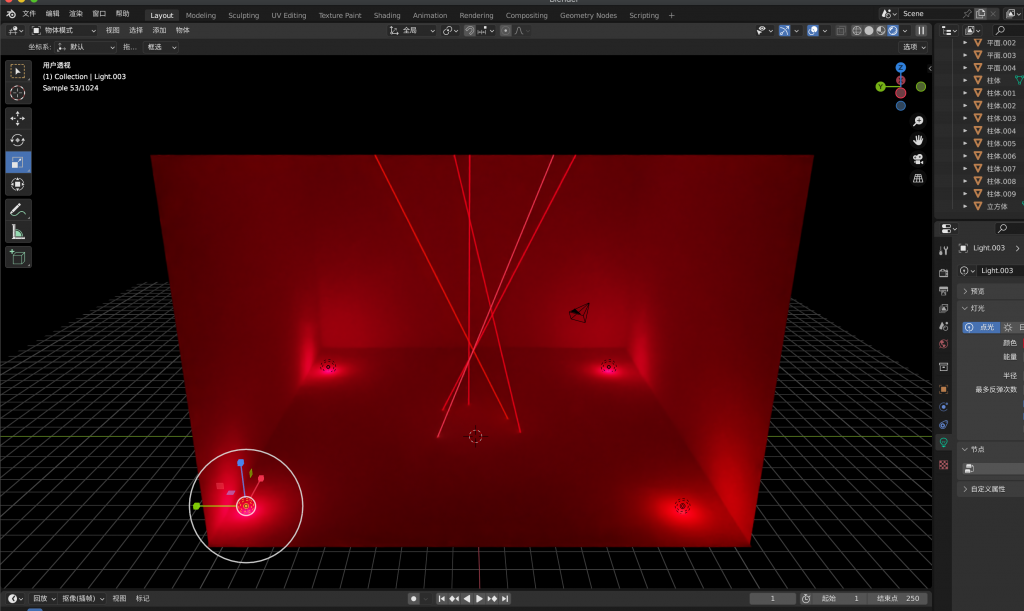Objective: In a dark room, when the audience touches the laser beams, specific sound feedback will be triggered.
Device Selection: Determine the sensors, laser modules, and Arduino to be used, as well as the sound processing software (Max/MSP, Pure Data).
Materials: Red laser modules, photoelectric sensors, Arduino, jumper wires, power supply. Determine the arrangement of the room and the installation positions of the equipment to ensure that the layout of the lasers is reasonable and can be detected by the sensors.
Testing the Sensors and Laser Modules: Initially, without sound processing, use the Arduino to read the sensor status to ensure that the sensors can correctly detect the interruption of the laser beams.
Circuit Setup: Connect the red laser modules, photoelectric sensors, and Arduino, ensuring they work properly and communicate with the computer via the serial port.
Write a simple Arduino program to read the state of the photoelectric sensors and verify that a trigger signal is sent to the computer via the serial port. This test will help you ensure that the hardware is functioning correctly.
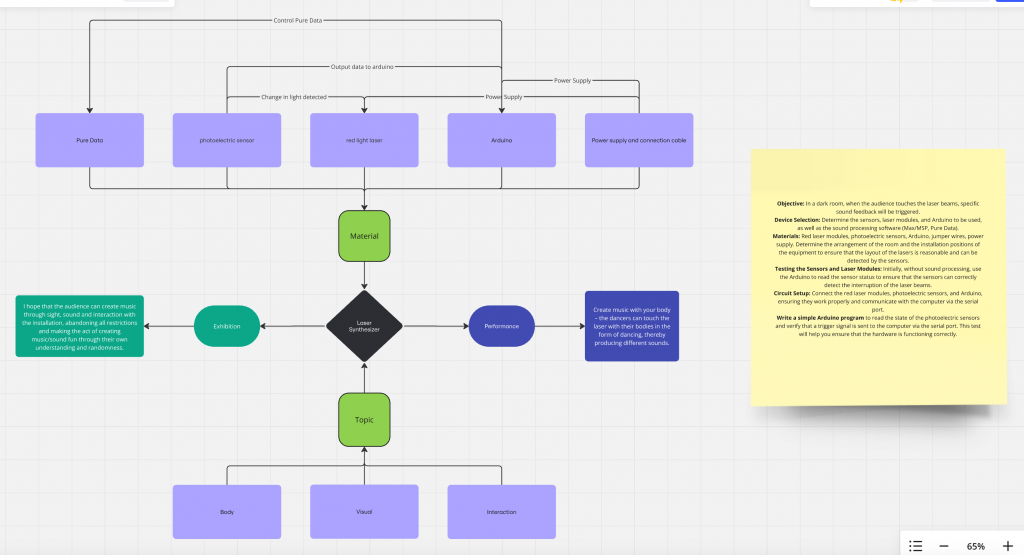
SOUND AND BODY INSPIRATION
https://www.instagram.com/reel/Cvw5NcVAZBk/?igsh=ODRsMnAzNzRpcmRv
I love this installation about it’s body contact. It looks like people give a huge to the big cute “ballon” then some sound feedback was given.
I’ve been thinking about why I’m so drawn to sound and light. Like last time at the Gallery46 exhibition, I used red lighting. Maybe it’s because I’m still curious about the relationship between sound and visuals. Another reason could be that red light has this cool mix of danger and calm—it just looks so striking. I thought, wouldn’t it be great if I could dance under the lights while making music? Like a Theremin, where your fingers move as if they’re dancing.
I rendered an animation in Blender, but during testing, I noticed that the red lasers only show their beams when there’s smoke around. I’m not sure if the photoelectric sensors will be able to detect them. Last year, while learning Pure Data, I discovered I could use an iPad to control a synthesizer I made on it. I wonder if lasers could be used for control too.
I’ve found some sound works related to lasers, but most of them are on a much larger scale and lean more toward projection effects. They look really cool, but that’s not exactly what I’m going for. Those pieces are more like light shows, whereas I think I want the audience to be more involved. I see sound as something that sets the atmosphere, but I want the audience to really immerse themselves in it. I’m thinking of covering the floor with things like gravel, wood blocks, and leaves to add more layers of sound in a non-technological way. That way, as people walk through the space, they can keep experiencing different sounds.
Last year’s UVA exhibition had a huge impact on me. I really loved the installations there. They drew inspiration from math, science, industry, and philosophy, creating an environment that redefined architectural space. The interplay of space, movement, sound, and light was fascinating. One piece that really stood out to me was Edge of Chaos—it’s definitely one of my favorites.
“The transitional space between order and disorder, between pattern and noise, has been a common theme in UVA’s work. This liminal space is referred to as the “edge of chaos,” and it is theorised that the dynamic interplay of order/disorder is the locus of creativity, adaptation and self-organisation in complex systems, and in all manner of organic life. The kinetic sculpture is a horizontal double pendulum that moves in ways that are random and unpredictable, with only the speed of movement being driven by the artists. It moves through space, guided in part by its own inertia, casting a wall of light that transforms the architecture of the gallery, at times expanding, at times contracting, in ways that feel as if the walls themselves have come to life.
Edge of Chaos brings a new dimension to this inquiry through the introduction of randomness and chance. Whereas in previous works the shapes and spatial transfigurations were precisely orchestrated by UVA, here they emerge from the interaction of the double pendulum with the forces of gravity and friction. As such, any meaning or patterns that we might interpret in the sculpture’s movements or architectural configurations originate entirely within ourselves.“—— Edge of Chaos London, 2023
https://www.uva.co.uk/features/edge-of-chaos
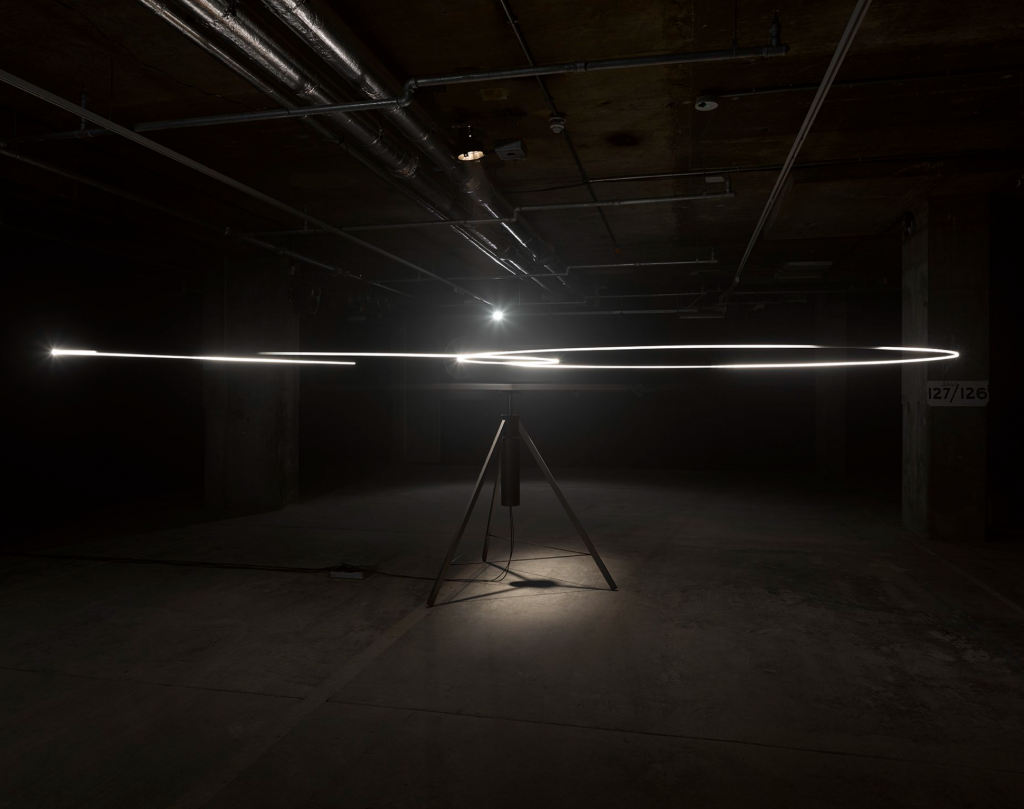
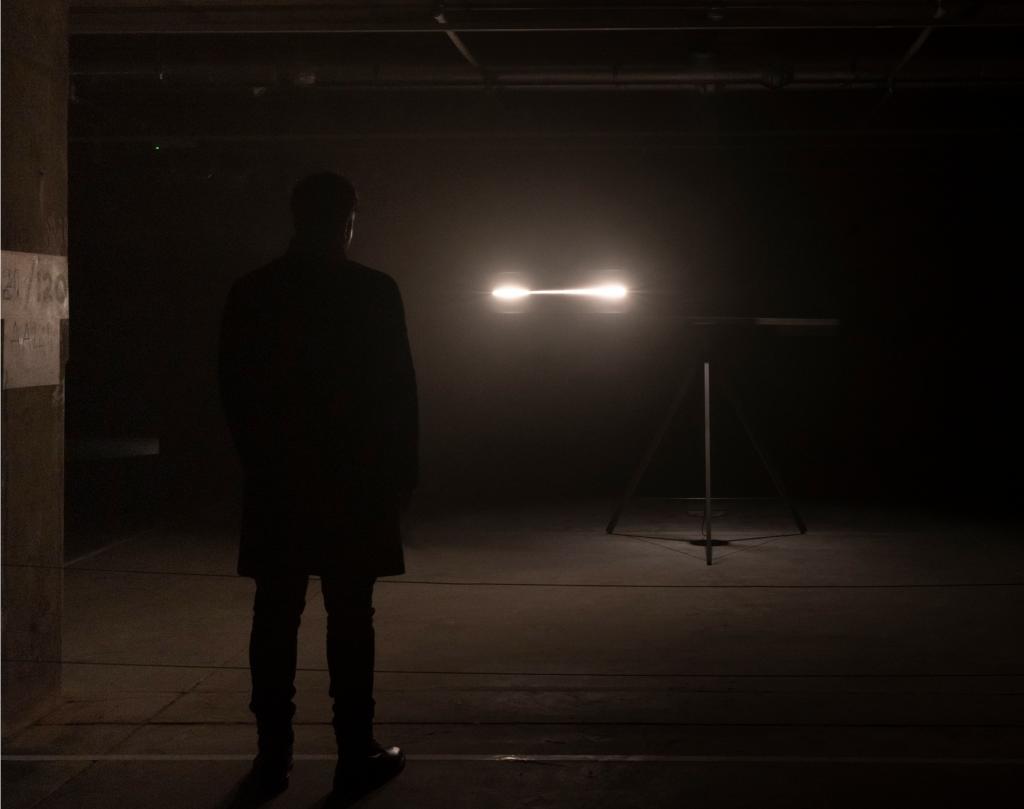
NONOTAK studio, also do a lot of sound and light installations
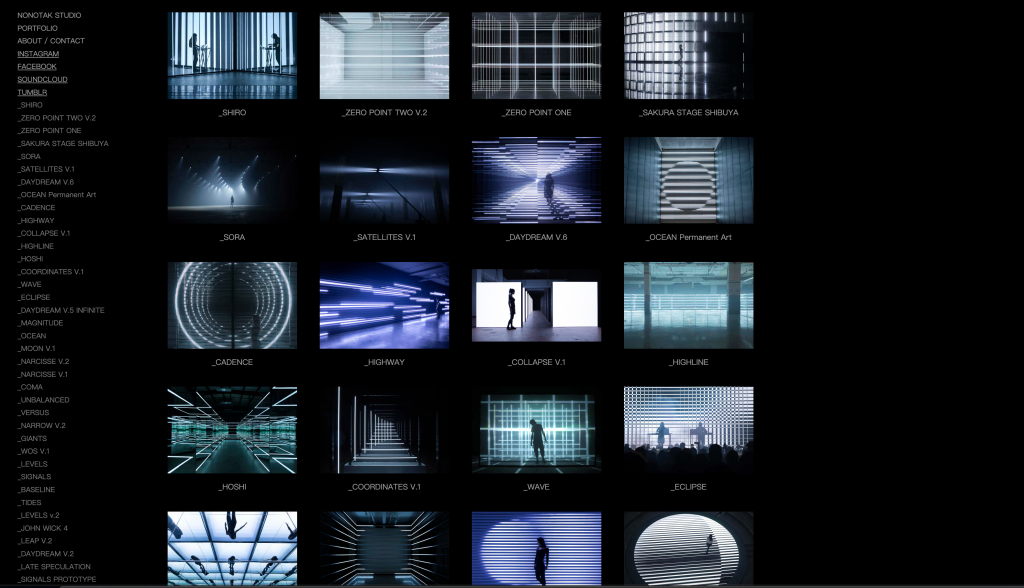
I really, really want to achieve this effect, but obviously the budget and technology are not yet available….
2024.11.26
During my research today, I accidentally came across a sound installation online that is incredibly similar to my concept. It’s called Sound Forest (incidentally, one of the inspiration pieces for my other project is also named Sound Forest, and I discovered this while searching for it).
https://www.kth.se/hct/mid/research/smc/projects/sound-forest-1.897050
He successfully created illuminated strings that, when integrated with the environment, transformed into a large-scale musical instrument. The installation combines sound, tactile feedback, and colorful lighting. Five illuminated interactive strings, a vibrating tactile platform, and speakers provide multi-sensory feedback and musical content.
I really like this design, so I’m now planning to change my project into a Noise Box. It will roughly function like this: the installation will allow up to five people to create noise simultaneously, but if you prefer, you can also create five types of noise on your own.
The updated concept is shown in the diagram below:
